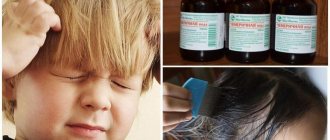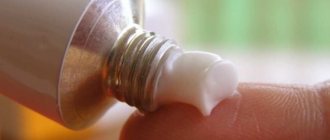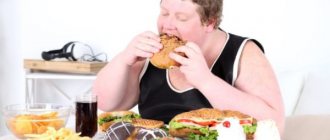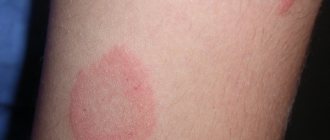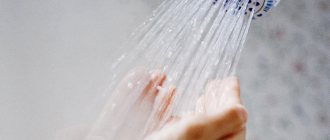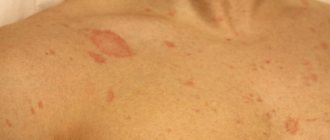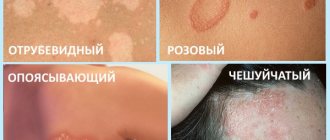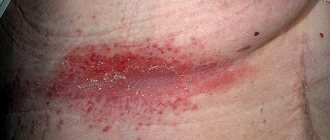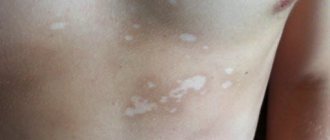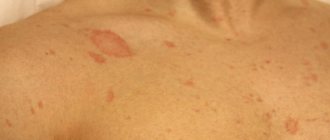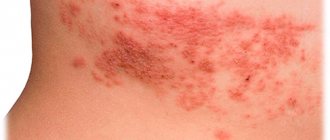Quite a large number of people who like to sunbathe are familiar with the manifestations of solar lichen. This disease can be found equally often in men and women, and its prevalence does not depend at all on what kind of tanning a person practices - natural or artificial.
Despite the fact that solar lichen is a rather unpleasant disease, in most cases it does not cause any discomfort other than aesthetic. That is why the problem of getting rid of it is more relevant for the fair sex.
Reasons for appearance
Most dermatologists are of the same opinion - damage to the stratum corneum of the epidermis and hair cuticles is caused by fungi of the genus Pityrosporum and Malassezia. Pathogens are transmitted only through close, prolonged contact from a sick person to a healthy person. The disease is low-contagious, that is, less contagious.
The risk of infection depends more on the condition of the body than on communication with infected people. After infection, several weeks sometimes pass before the first spots appear on the body. Under favorable conditions, active reproduction of fungi begins.
Provoking factors:
- decrease in the body's defenses;
- vegetative-vascular dystonia;
- diabetes mellitus, obesity;
- frequent colds;
- uncontrolled use of antibiotics;
- wearing synthetic items for a long time;
- the use of antibacterial gels that disrupt the composition of microflora and reduce the protective functions of the epidermis;
- increased sweating, changes in the composition of sweat;
- incorrect selection of cosmetic preparations for skin care;
- excessive exposure to UV rays with frequent visits to the solarium, long stays on the beach. Hence the popular name “sun fungus” or “beach disease”;
- abuse of tanning creams, which cause an allergic reaction and provoke the growth of fungi.
Some dermatologists believe that symptoms of lichen versicolor appear in patients suffering from lymphogranulomatosis and pulmonary tuberculosis.
On our website you can find out the best recipes for moisturizing masks at home.
And this article describes recipes for whitening face masks.
Prevention
In order to avoid this disease, it is important to take some preventive measures:
- It is worth refusing to visit the solarium;
- There is no need to use antibacterial soap or shower gel every day;
- It is best to sunbathe in the morning or evening; you need to choose dark places with diffused shade from green spaces;
- Be sure to apply sunscreen to the surface of your skin before you start sunbathing;
- In hot weather, you should not wear things made of synthetic material;
- Monitor your health and strengthen your immune system.
If you follow all the important recommendations, you can avoid this skin disease. It is important to closely monitor your health; you need to take special vitamin preparations to increase the body’s protective properties. If you notice characteristic signs of this disease on the surface of the skin, it is better to consult a doctor for an examination.
Symptoms and signs
“Solar fungus” has a number of characteristic features:
- Numerous round spots with uneven, clearly defined edges appear on the body;
- no pain, redness, swelling;
- spots of coffee, yellow, pinkish-brown, milky color do not rise above the skin;
- over time, areas of a different color grow, sometimes to the size of the palm of an adult;
- When rubbing the affected areas, particles of the epidermis peel off.
Pay attention! Complaints of itching, burning, and discomfort in the area of multi-colored spots are not signs of “sun fungus.” These facts indicate the penetration of pathogenic microorganisms onto the skin.
Main locations:
- breast;
- back;
- lateral parts of the body;
- stomach;
- neck.
In young children and adolescents, the manifestations of “beach sickness” are located on:
- hands;
- legs;
- armpits;
- on the scalp.
A characteristic symptom of “beach sickness” is that during exposure to the sun, UV rays do not affect the affected areas. These areas do not tan and stand out noticeably against the background of healthy areas.
How to confirm the diagnosis
For a final diagnosis of “solar lichen,” the mere presence of suitable symptoms is not enough, since some other skin diseases can also have this appearance. In order for the diagnosis to be carried out correctly, you need to seek help from a dermatologist.
At the first stage, the doctor listens to complaints and examines the patient. At this time, you can determine the presence of Besnier's symptom (when you scrape the affected area with a glass slide, the skin flakes off in the form of shavings) and examine the spots under a Wood's fluorescent lamp (the formations begin to glow with a yellowish light).
Another informative method is the Balzer iodine test. Its essence is to treat the affected areas with a 3 or 5% iodine solution. This substance was chosen due to its ability to quickly penetrate deep into the skin.
Sometimes, instead of iodine, a solution of brilliant green or Fukortsin is used. The product is applied in a small amount to the stain and after some time the intensity of the staining is assessed. A fungal infection is confirmed if the affected area becomes darker brown compared to healthy tissue.
For further diagnosis, a general (detailed) blood and urine test is required, and a scraping is made from the surface of the changed area of skin. It is studied under a microscope to detect the components of the fungus.
As additional examination methods that make it possible to distinguish diseases that are similar to each other, the Wasserman test or RPR test is performed.
Differential diagnosis
Vitiligo in its early stages may be clinically similar to sunburn. The disease is not accompanied by any subjective sensations, and the appearance of spots on the skin is also caused by impaired functioning of melanocytes.
The lesions have a milky white color and are clearly demarcated from the surrounding healthy tissue. There is a greater tendency in pathological areas to merge and expand the affected area.
At the initial manifestations of the disease, the diagnosis can be established only on the basis of additional research methods. The most informative is a skin biopsy followed by a histological study of the material taken.
Syphilitic leukoderma implies damage to melanocytes, only in this case the damage is caused by another infectious pathogen - Treponema pallidum. Pathological foci are predominantly localized on the back and sides of the neck, chest and back.
Initially, diffuse, bright yellowish-brown areas form on the skin, which after 2-3 weeks are replaced by weakly pigmented spots. Unlike solar lichen, they are the same size and do not merge with each other, being located in isolation.
It is possible to definitively distinguish syphilitic leukoderma during examination using a Wood's ultraviolet lamp or when performing the Wassermann reaction to detect treponema pallidum.
Lichen rosea, also known as Gilbert's lichen, is similar to solar lichen only in that spots with a pinkish tint appear on the body. The disease has several distinctive features, the presence of which allows us to finally formulate a diagnosis.
Firstly, a single so-called maternal lesion is initially formed on the skin, from which characteristic spots then form.
Secondly, the affected areas are surrounded by a red rim along the periphery and are located in places of least stretching of the skin - on the back, abdomen and thighs in the transverse direction (Langer's lines). Unlike solar lichen, the disease is characterized by gradual spontaneous disappearance of symptoms.
Methods of treating the disease
The disease has pronounced symptoms, but you should not prescribe treatment yourself. Do not use antifungal ointments until you consult a doctor. You can “smear” the manifestations, causing uncontrollable changes in the skin with improper therapy.
Visit a dermatologist. In most cases, the specialist does not limit himself to a visual examination, but prescribes additional tests. Specific studies will help make an accurate diagnosis:
- dermatoscopy of solar lichen spots;
- luminescent diagnostics. Under a Wood's lamp, which is used to determine many dermatological diseases, pathogenic fungi glow with certain colors and shades;
- Balzer iodine test. After the test, the affected skin looks much darker than healthy areas;
- microscopic analysis of the contents taken from the stain area. After tests, the causative agent of a fungal disease is detected in particles of the epidermis;
- test confirming Besnier's symptom. In case of pityriasis versicolor, even a slight impact produces results - the scales of the epidermis are suitable for research. It is very difficult to collect particles of the stratum corneum from healthy skin;
- A general blood test is required.
Sometimes PCR diagnostics are required to differentiate from other skin diseases. If syphilis is suspected, an RPR test is performed to confirm or refute the presence of Treponema pallidum.
How to get rid of sun lichen? Main methods of treatment:
- local therapy;
- use of traditional medicine recipes;
- prescription of general strengthening drugs;
- preventive measures.
Dermatologists recommend treating affected areas with safe products that have proven their effectiveness. Your doctor will prescribe one of the local remedies that suits you.
Lubricate lichen spots:
- Resorcinol alcohol;
- Clotrimazole;
- Salicylic ointment;
- Terbinafine;
- Sulfur ointment;
- Cycloperox;
- Naftifin;
- Salicylic alcohol;
- Lamisil.
Among the names of antifungal agents are creams, solutions, and ointments for sun lichen. Some drugs are available in different concentrations, for example, resorcinol alcohol, sulfuric ointment, salicylic ointment. Only the doctor decides which medicine to give preference to.
Taken into account:
- test results;
- affected area;
- individual tolerance of certain antifungal compounds.
Most dermatologists recommend modern antimycotic drugs in the form of solutions, lotions, and sprays. Advantages:
- high-quality treatment of every millimeter of lichen spots;
- uniform application regardless of the location of the affected areas;
- absence of an oily film on the skin, which is created by preparations in the form of a cream. In the warm season, this factor is very important.
In addition to local treatment, general therapy is recommended in advanced cases. The following drugs are designed to suppress the activity of fungi:
- Ketoconazole;
- Orgunal;
- Itraconazole
Taking Cycloserine will help restore normal pigmentation of the affected areas. The drug has earned a lot of positive reviews.
How long does treatment last? The sooner you see a doctor, the sooner you will get rid of fungal infection of the epidermis. With the correct selection of local remedies and the simultaneous use of oral medications, the condition improves quite quickly.
A late visit to a dermatologist can result in unpleasant consequences:
- treatment is delayed;
- often a bacterial infection is associated with a fungal infection;
- requires the use of antibiotics that weaken the immune system;
- side effect of antibacterial therapy - with reduced immunity, there is a high risk of relapse of the “solar fungus”.
Conclusion: when the first asymmetrical spots of pinkish-gray, yellow, brownish colors appear, make an appointment with a dermatologist. With mild forms of “beach disease,” most patients recover after local treatment.
Local therapy
Treatment of solar lichen is a very painstaking matter, it is carried out at home.
There are a great variety of drugs, and only a dermatologist can select one or more that are suitable in this particular case. Unfortunately, there are no universal combinations, but we will look at those medications that, according to real people, help.
These are fungal killers. They can be systemic (in the form of tablets or capsules) and local.
Fluconazole is used as a systemic drug. It is taken for 2 days, 150 mg. After a week, repeat 300 mg. This is where the treatment ends.
The following antifungal ointments are used to treat solar lichen: Clotrimazole, Nizoral, Lamisil, Exoderil. They are applied 1-2 times a day for a week, then a break is taken for a month, after which the two-week course is repeated.
If you need to treat an area on the head, it is first recommended to wash your hair with an antifungal shampoo (Nizoral, Dermazol, Perhotal, Sebozol), and then apply a fungicidal ointment to it.
These are products for exfoliating the surface layers of the skin along with the pathogen. These include 2% alcohol solutions of salicylic acid or resorcinol, 50% urea ointment, Arievich ointment. They are applied frequently - every 3 hours.
Such drugs are especially good in the initial stages of the disease. They can also be used together with antiseptic agents with antifungal activity: first, a keratolytic is applied to the lesions of lichen, and then iodine, a solution of fucorcin or Miramistin.
Effective remedies for solar lichen are zinc-based medications: “Psorilom”, “Skin-cap”. The latter is available in the form of a cream (it is applied to the skin of the body) or a spray (it is better to treat the scalp).
A primary role in the treatment of solar lichen is played by diagnostic measures aimed at identifying the true cause of the disease. Only after this can the doctor recommend taking a particular medication.
In addition to antimycotic drugs, the doctor prescribes the use of keratolytic agents. If the first group of medications is aimed at reducing the concentration of fungal pathogenic agents, then the second helps exfoliate the top layer of the affected areas.
Among the keratolytic drugs are:
- salicylic alcohol;
- sulfur ointment;
- boric acid;
- resorcinol alcohol;
- salicylic ointment.
They are prescribed for mild forms of the disease. The products are applied morning and evening to previously prepared (cleansed) skin of the affected areas of the body. The action of these drugs is aimed at softening the area of the rash elements and further exfoliating them. In mild cases of pathology, their use is sufficient.
Some experts recommend wiping the affected areas of the body with table vinegar. This handy remedy also helps soften the skin.
For moderate or higher severity of sun lichen, a special antifungal ointment, cream or solution can help.
Due to their effectiveness, the following antimycotic external preparations are most popular:
- Clotrimazole.
- Ciclopirox.
- Mycozolon.
- Lamisil.
- Terbinafine.
The above antifungal agents are available in various forms. It can be an ointment, spray, cream.
They should be used according to the indications of a specialist, as well as according to the instructions. As a rule, they all have side effects, so some categories of people (especially pregnant women and children) need to use them with extreme caution.
In severe cases, hormonal external agents (for example, Celestoderm ointment) may be prescribed.
Aggravation of pathology due to the addition of a secondary infection and non-compliance with personal hygiene rules requires an integrated approach. In this case, in addition to local remedies, systemic and supportive therapy is prescribed. In some cases, even corticosteroid drugs (local and systemic) are prescribed.
Effective oral medications include:
- Ketoconazole.
- Itraconazole
- Rumicosis.
- Fluconazole.
- Nystanin.
- Orungamin.
- Mycozoral.
- Fungoterbin.
- Pimafucin.
The active substances included in the above tablets help destroy pathogenic microorganisms and reduce the inflammatory process. Oral medications are considered modern, highly effective medications that help fight the causative agent of fungal disease.
However, before using them, you should consult a specialist. Due to the presence of side effects, it is not recommended to take the pills for children, as well as women during pregnancy.
The effectiveness of treatment depends on timely consultation with a doctor. This is due to the fact that at the initial stage it is easier to eliminate the symptoms of the pathology, while in advanced cases it is much more difficult to remove the rash. And relapses in the latter case occur much more often.
Maintenance therapy includes the use of restorative drugs, as well as preventive measures. Considering the seasonal nature of the pathology, as well as the influence of the sun, high temperature and humidity, they should be adhered to during periods of exacerbation and remission.
Experts recommend following the following recommendations:
- pay attention to your diet. The diet during the period of exacerbation and recovery should include the consumption of large quantities of vegetables and fruits, wholemeal bread, as well as cereals. Restrictions apply to fried, salted and canned foods, as well as baked goods and alcohol;
- give preference to clothes and bedding made from natural fabrics. It is better not to use artificial materials;
- observe the rules of personal hygiene. It is recommended to shower and use cleansers daily, especially in the summer;
- carry out procedures based on the action of ultraviolet rays (sunbathing, sunbathing in a solarium). However, in this case, the doctor’s recommendation regarding the prescribed dose of ultraviolet radiation should be followed.
In addition to the use of local and systemic medications, the doctor may prescribe immunostimulating agents (Cycloferon, Isoprinosine, etc.).
Local and systemic medications for lichen in humans effectively eliminate the symptoms of the disease at the initial stage and during the period of active rashes. To avoid complications, you should carefully read the instructions for use before using them.
Folk remedies and recipes
Supplement your therapy with proven home remedies. Do not replace, but complement. Unfortunately, not all patients follow these recommendations; they self-treat with herbs and ointments and wonder why there is no result.
Only after consultation with a dermatologist can you use traditional medicine recipes. Remember - the basis of treatment is antifungal ointments, and if necessary, systemic therapy.
How to cure sunburn at home? Proven recipes:
- sea buckthorn oil. Treat affected skin with undiluted product 2 times a day. You can add a few drops of healing oil to any nourishing cream and lubricate lichen spots. Sea buckthorn oil has a healing, soothing effect;
- rosehip infusion. An excellent remedy that strengthens the immune system. Pour 2 tbsp into a thermos. l. fruits, pour in 0.5 liters of boiling water. After two hours, strain the infusion. Take half a glass orally twice a day. Some herbalists recommend treating spots with “sun fungus” with infusion;
- wild or horse sorrel. Finely chop a bunch of leaves and combine with a tablespoon of sour cream. Apply the paste onto the stains and wash off after 15 minutes;
- Apple vinegar. Only a high-quality product is suitable for treating lichen spots. Every three hours, wipe away any blemishes on your body with apple cider vinegar. Watch the reaction. If itching or severe peeling occurs, stop the procedure;
- rosehip oil. Buy healing oil at the pharmacy. Apply to affected areas twice daily.
How to treat irritation under the arms? We have the answer!
On this page you can learn everything about treating acne on the head.
At this address, read useful information about folk remedies for urticaria in adults.
FAQ
Question: Can you get infected from another person?
Answer: There is information in the medical literature that with close and prolonged contact, the fungus can be transmitted from one person to another. But since the pathogen is an opportunistic microorganism, the disease (against the background of normal functioning of the immune system) does not develop.
Question: Does solar lichen appear only in the summer?
Answer: No. But at this time of year, the disease is much easier to identify, since the characteristic spots on the skin are more visible against a tan.
Question: Does the disease develop only in people with fair skin types?
Answer: Sun lichen occurs with equal frequency in people with both light and dark skin.
Solar lichen in children
Toddlers and older children also develop multi-colored spots caused by a fungal infection. Symptoms of fungal skin infections are similar to those of sunburn in adults.
There are several causes of the disease:
- allergic reactions to sunlight, which provoke the proliferation of fungi;
- exposure to direct sunlight. A short period of time is enough to damage delicate baby skin;
- weakened immunity. One of the reasons is frequent respiratory infections.
In children, areas with unusual pigmentation appear:
- on legs, arms;
- in the armpits;
- on the scalp.
If strange spots appear, be sure to visit a dermatologist. The doctor will order tests and recommend antifungal medications based on the child’s age. Timely initiation of therapy will allow you to quickly cope with the disease.
Important! During treatment and in the future, spend less time in the sun with your children at dangerous times of the day - from 11 a.m. to 4 p.m. Strengthen the immune system, give your child multivitamins, and provide a varied diet.
Diagnostics
Solar lichen is easily diagnosed
Due to the long incubation period, the disease can manifest itself after the spring-summer period.
This misleads people.
They do not in any way connect the fungus with exposure to sunlight, confusing the fungus with syphilis, leucoderma, vitiligo or Gibert's disease.
In addition, the fungus develops over a long period without showing any symptoms.
In order not to make a mistake in making an accurate diagnosis, when the first signs of lichen are detected, you should immediately contact specialists to undergo a special comprehensive examination.
A professional dermatologist can, by visually examining a patient, determine the type of lichen that has affected the skin. To be more confident in making the correct diagnosis, experts advise undergoing a more thorough examination.
Among the methods used during the examination are the following:
- Carrying out a detailed bacteriological analysis of scrapings taken from the affected area of the skin. Based on this method, specialists are able to determine the presence of pathogenic fungi in the epidermis of the skin that can initiate the development of pathology.
- Examination using a luminescent method. To carry out this examination method, a special Wood's lamp is used. When exposed to light from this fluorescent lamp, the affected areas of the skin tend to glow.
- Balzer test (iodine). The peculiarity of this technique is that the spot and adjacent healthy skin are generously lubricated with iodine using a cotton swab. Since the surface affected by the fungus is loose, it will absorb the solution faster and as a result will turn dark brown, which is not observed on healthy skin.
- A skin scraping test to determine the presence of Beignet's sign. The essence of the method is to scrape the skin. If the disease is present, the epidermis will peel off in several thin layers.
- PCR diagnostics. This method is used if the specialist has a question about whether the patient has syphilis or solar lichen.
Upon completion of a comprehensive examination, specialists have every opportunity to make the most accurate diagnosis, as well as choose an effective treatment method.
Preventive recommendations
Fans of chocolate tans should think carefully: “Do you need to spend the whole day on the beach?” You can purchase not only “sun fungus”, but also other types of photodermatosis. Long hours in the sun provoke the growth of moles, lead to the formation of age spots, and cause sunburn.
Following simple rules will prevent the occurrence of a fungal infection, which is “beach disease.” Prevention measures:
- do not visit the solarium;
- Avoid using antibacterial soap or shower gel every day;
- sunbathe in the morning and evening hours, stay more in the diffused shade of green spaces;
- In summer, do not go outside without a special cream with UV filters. After therapy, protect not only the face, but also other open areas of the body with the composition;
- take care of your health, strengthen your immune system;
- in hot weather, do not wear clothes made of synthetic fibers;
- in case of excessive sweating, treat skin folds and armpits with powder, talcum powder, and wipe with a decoction of oak bark;
- control the course of endocrine system diseases;
- treat heart pathologies, strengthen blood vessels.
Have you been diagnosed with sunburn? Listen to your doctor's advice. Treat affected areas with local products. Supplement therapy with folk recipes. Follow preventive measures, and your skin will never be covered with multi-colored spots.
The following is a medical video - a reference book from which you can learn a few more home recipes for the treatment of tinea versicolor or solar lichen:
Complications
When asked why solar lichen is dangerous, many dermatologists answer that the disease is only a cosmetic defect. There is also a small danger of infecting people with whom the patient is in close contact (especially if they often suffer from colds or have other pathologies that reduce immunity).
Some experts note that if this fungal disease is not treated, more serious consequences may develop in areas where the fungus has spread: areas of suppuration, weeping eczema. The resulting itching and desire to get rid of stains lead to neuroses.
